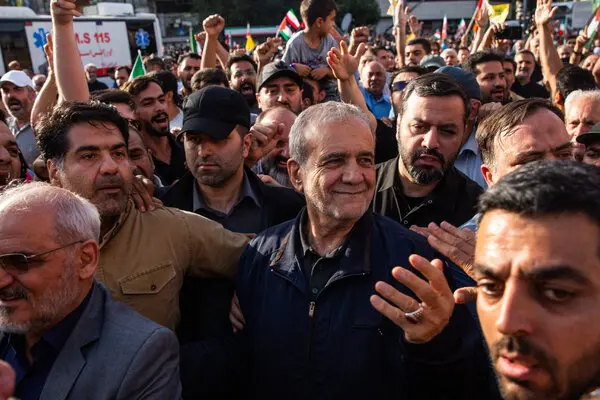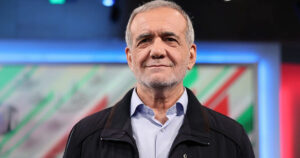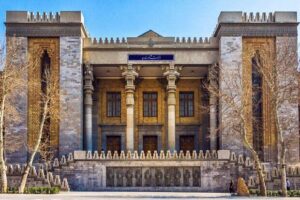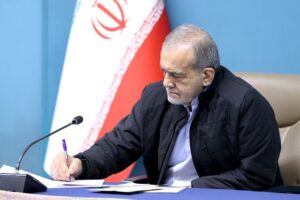Mass Protests Erupt in Tehran After U.S. Strikes on Nuclear Sites, President Pezeshkian Joins Public Outcry

Tehran, The Gulf Observer: Thousands of Iranians gathered in Tehran’s Enghelab Square on Sunday evening in a powerful display of national defiance following U.S. airstrikes on Iranian nuclear facilities. The protest erupted just hours after American B-2 bombers conducted coordinated strikes on key Iranian sites in Natanz, Esfahan, and Fordow.
Chanting slogans such as “Death to America!” and “Get America out of the region!”, the demonstrators voiced deep anger at what they described as blatant U.S. aggression. Many demanded an immediate and firm response from the Iranian government.
“They bomb us, then brag,” said a protester waving the national flag. “We need an answer. Kick them out.”
The airstrikes targeted Iranian nuclear infrastructure, including the heavily fortified Fordow facility, which is located deep underground and shielded by a mountain. While Sunday’s U.S. strikes reportedly caused no casualties, earlier Israeli attacks—carried out ten days prior and continuing against civilian infrastructure—have resulted in over 400 deaths and more than 2,000 injuries, according to Iranian authorities.
Protesters also condemned the extensive U.S. military presence in the region. “They have 19 bases right here in West Asia,” said one woman. “Forty thousand soldiers and workers, sitting on our borders. They need to go home.”
In a rare and symbolic move, President Masoud Pezeshkian made an unannounced appearance at the protest. Without heavy security, he entered the crowd and listened as citizens expressed outrage over the attacks. His presence energized the demonstrators, and in a brief address, he echoed their call for resilience and resistance.
“They talk peace while dropping bombs,” said an elderly man watching the President among the people. “Him being here? It means he gets it. America broke its word. They have to leave.”
President Pezeshkian vowed to deliver a comprehensive response in due course. While Iran’s official response to the U.S. aggression remains forthcoming, the country has already intensified its strikes on Israeli-occupied territories, continuing a broader regional confrontation that escalated sharply after the outbreak of war on June 13.
Iranian officials have previously warned that “no red lines” would be observed in the event of direct attacks from the United States, raising regional and international concerns about the potential for a broader conflict.
As tensions mount, the situation remains fluid, with global observers closely monitoring Iran’s next moves in what appears to be a rapidly deteriorating security environment in the Middle East.


